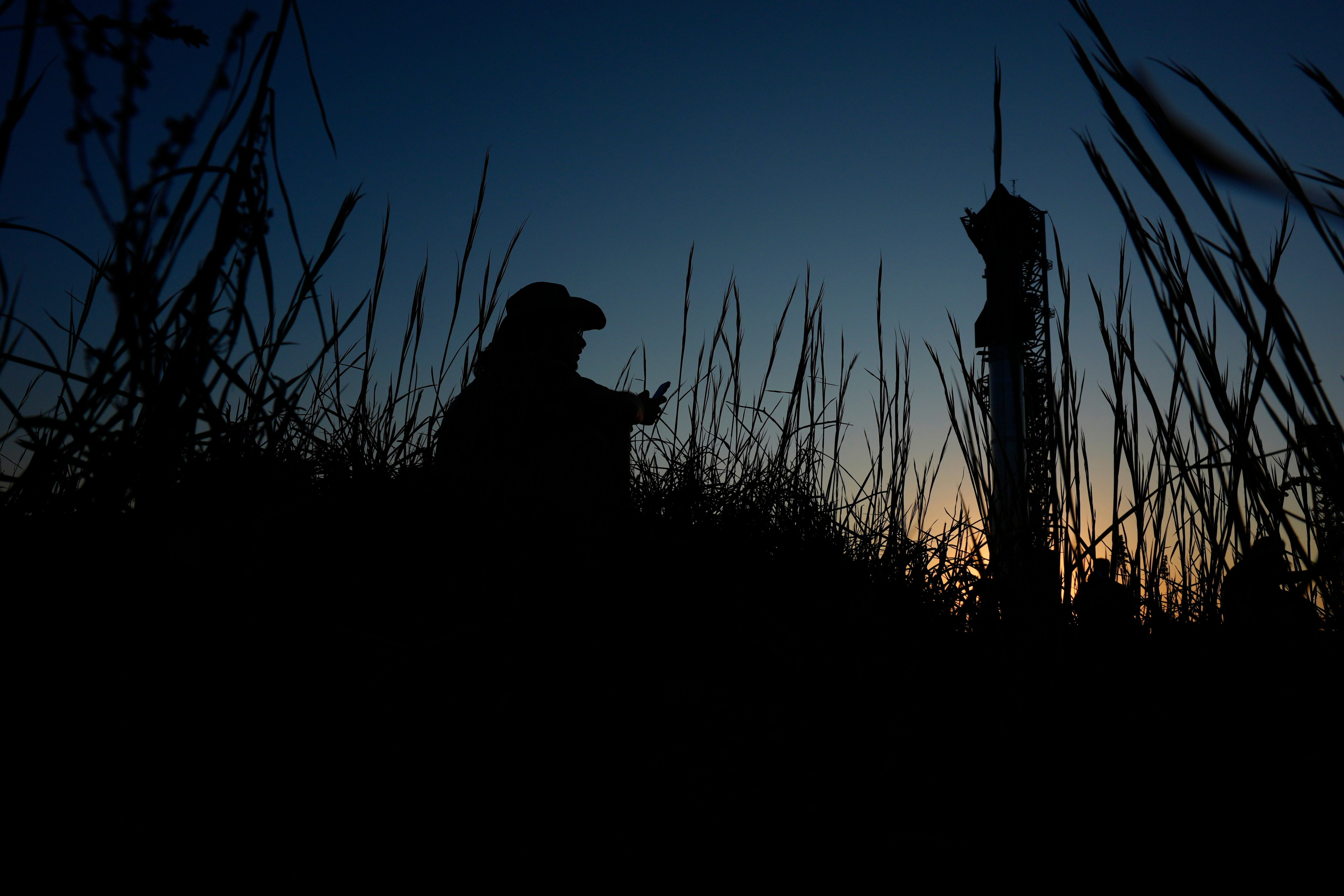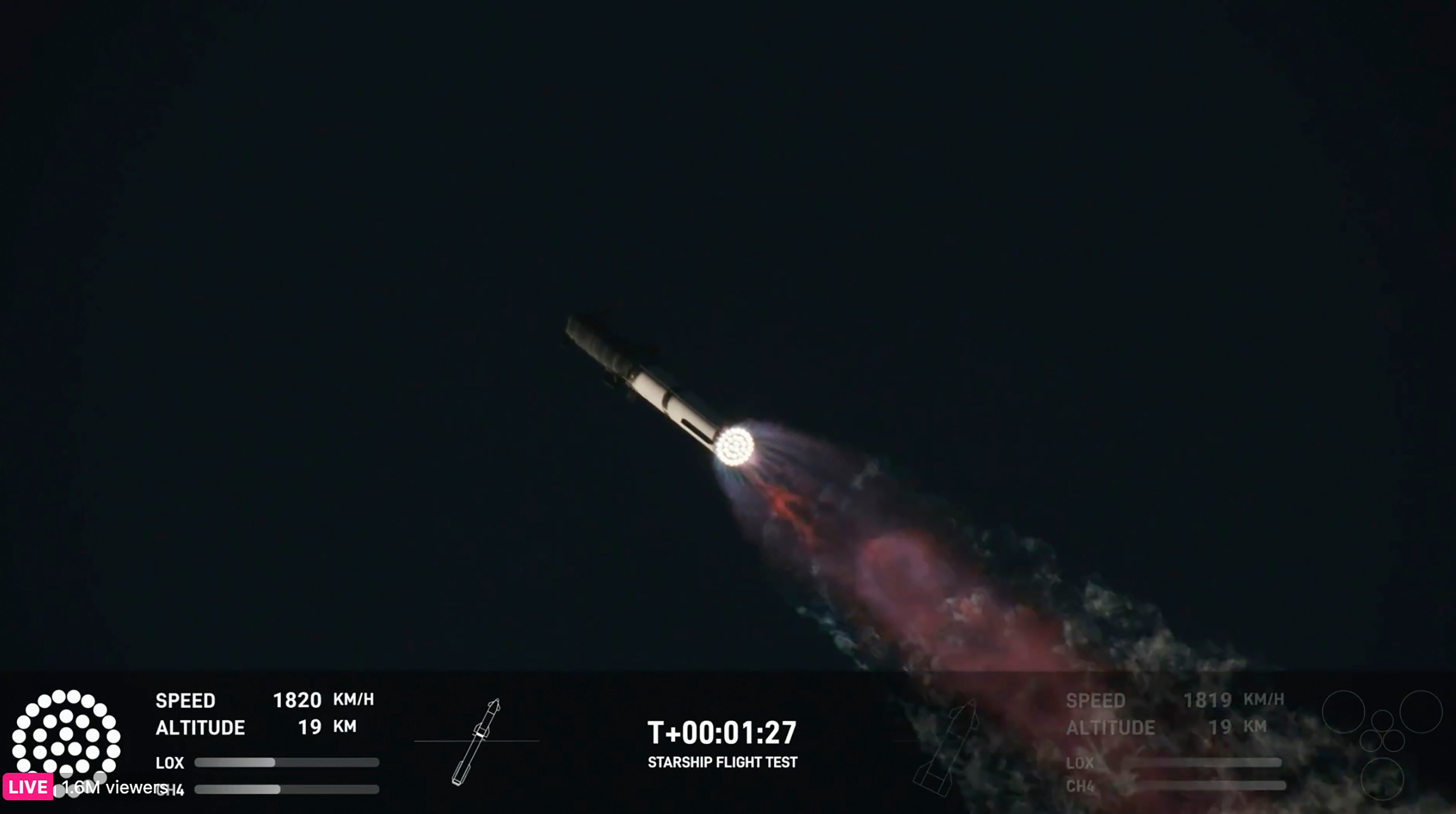Elon Musk’s SpaceX launches Starship rocket and catches booster with ‘chopsticks’ in astonishing test flight
Your support helps us to tell the story
From reproductive rights to climate change to Big Tech, The Independent is on the ground when the story is developing. Whether it's investigating the financials of Elon Musk's pro-Trump PAC or producing our latest documentary, 'The A Word', which shines a light on the American women fighting for reproductive rights, we know how important it is to parse out the facts from the messaging.
At such a critical moment in US history, we need reporters on the ground. Your donation allows us to keep sending journalists to speak to both sides of the story.
The Independent is trusted by Americans across the entire political spectrum. And unlike many other quality news outlets, we choose not to lock Americans out of our reporting and analysis with paywalls. We believe quality journalism should be available to everyone, paid for by those who can afford it.
Your support makes all the difference.SpaceX has successfully launched and landed Starship, the spacecraft it hopes will allow it to carry humanity throughout the solar system.
In an astonishing success, SpaceX used mechanical arms it refers to as “chopsticks” to catch its booster on the launchpad with the hope of reusing it.
The main part of the spacecraft – which SpaceX also refers to as Starship, and which it hopes will one day carry humans – then travelled into orbit before coming back down to splash into the Indian Ocean.
Starship is the most powerful rocket ever made. SpaceX and its chief executive, Elon Musk, hope that it will one day carry people to the moon and Mars.
Towering almost 400ft, the empty Starship blasted off at sunrise from the southern tip of Texas near the Mexican border.

It arced over the Gulf of Mexico like the four Starships before it that ended up being destroyed by ditching into the sea.
The last test flight in June was the most successful yet, completing its flight without exploding.
This time, SpaceX founder Mr Musk upped the challenge and risk.
The company brought the first-stage booster back to land at the pad from which it had soared seven minutes earlier. The launch tower sported monstrous metal arms – dubbed “chopsticks” – that caught the descending 232ft booster.
“Are you kidding me?” SpaceX’s Dan Huot observed with excitement from near the launch site. “I am shaking right now.”
“This is a day for the engineering history books,” added SpaceX’s Kate Tice, from its headquarters in Hawthorne, California.

It was up to the flight director to decide, in real time with a manual control, whether to attempt the landing.
SpaceX said both the booster and launch tower had to be in a good, stable condition. Otherwise, it was going to end up in the gulf like the previous ones. Everything was judged to be ready for the catch.
Once free of the booster, the retro-looking stainless steel spacecraft on top continued around the world, targeting a controlled splashdown in the Indian Ocean.
The June flight came up short at the end after pieces came off. SpaceX upgraded the software and reworked the heat shield, improving the thermal tiles.
SpaceX has been recovering the first-stage boosters of its smaller Falcon 9 rockets for nine years, after delivering satellites and crews to orbit from Florida or California. But they land on floating ocean platforms or on concrete slabs several miles from their launch pads – not on them.
Recycling Falcon boosters has sped up the launch rate and saved SpaceX millions.
Mr Musk intends to do the same for Starship, the biggest and most powerful rocket ever built with 33 methane-fuel engines on the booster alone.
Nasa has ordered two Starships to land astronauts on the moon later this decade.
Additional reporting by agencies

Join our commenting forum
Join thought-provoking conversations, follow other Independent readers and see their replies
Comments